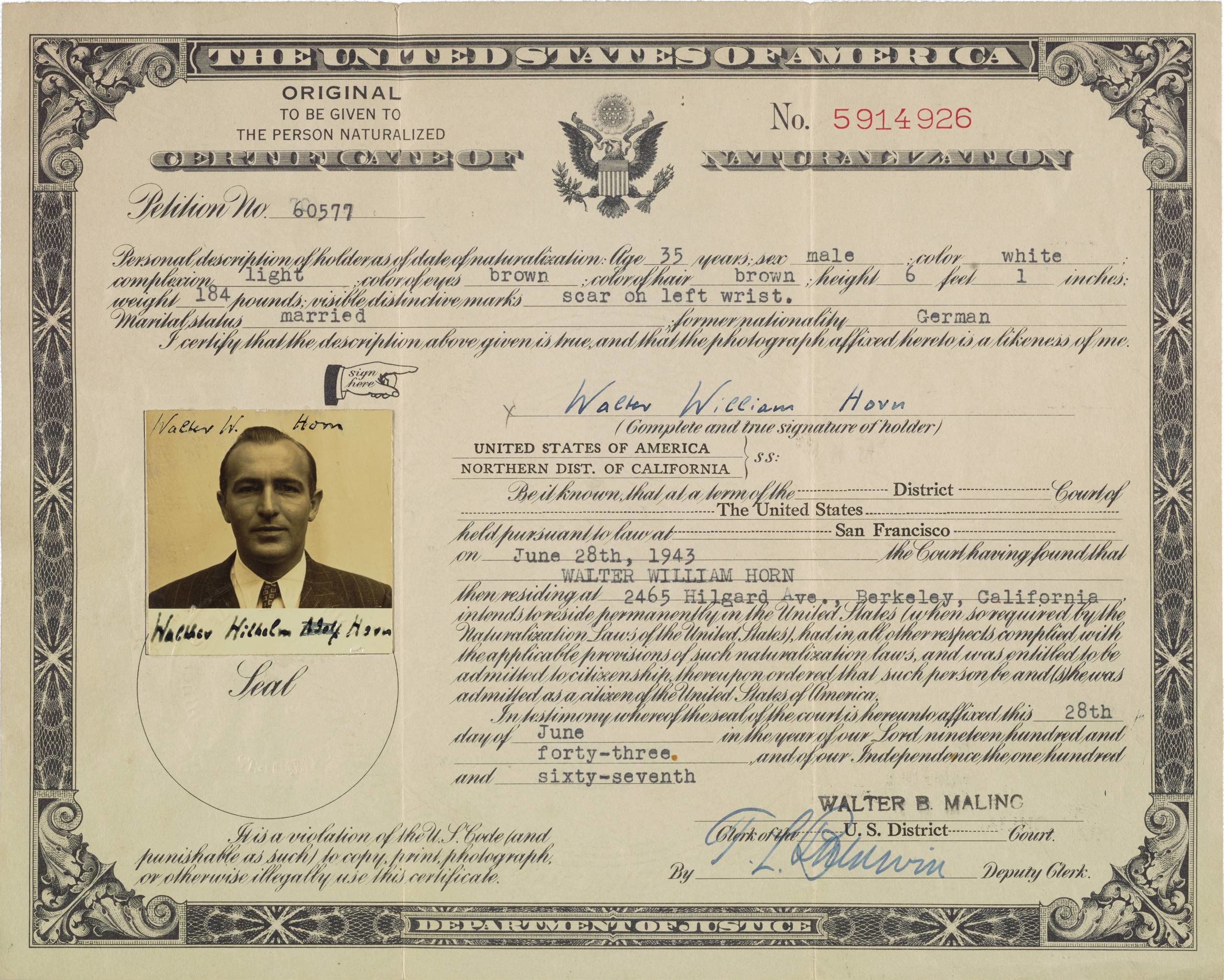Walter Horn
 Walter William Horn (18 January 1908 - 26 December 1995) was a German-American medievalist scholar noted for his work on the timber vernacular architecture of the Middle Ages.
Walter William Horn (18 January 1908 - 26 December 1995) was a German-American medievalist scholar noted for his work on the timber vernacular architecture of the Middle Ages.Horn was born in Germany, but fled Nazism and spent most of his academic career at the University of California, Berkeley, where he became the university system's first art historian and co-founded the History of Art department. A naturalized citizen of the United States, Horn served in the U.S. Army during World War II and then in the special intelligence unit that tracked down art works plundered by the Nazis. His most celebrated exploit was the recovery of the crown jewels of the Holy Roman Empire, also known as Charlemagne's Imperial Regalia. As a scholar, Horn is most noted for his work on the medieval architectural drawing known as the Plan of Saint Gall.
Additions: for recovery of Imperial Regalia, see Sidney Kirkpatrick, Hitler’s Holy Relics, Simon and Schuster, 2010. Horn was present as a guest of Austria at the reopening of the rooms dedicated to the Reglia at the Hofburg Museum in 1987. Provided by Wikipedia


